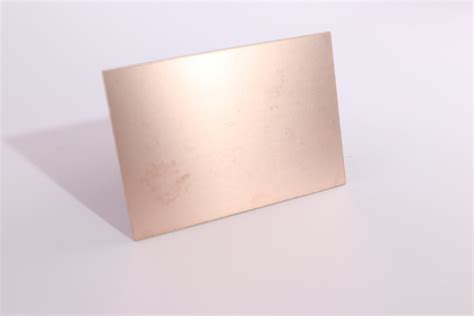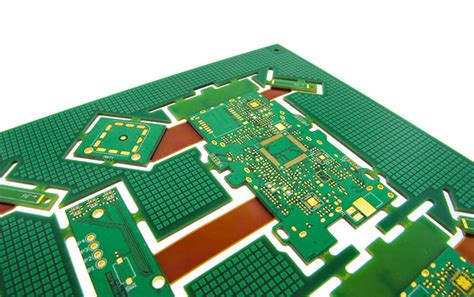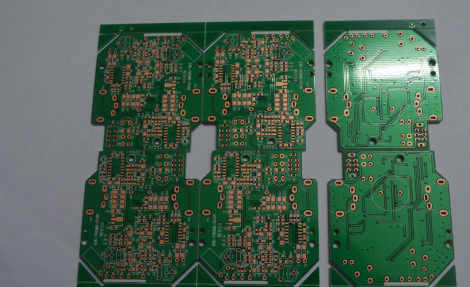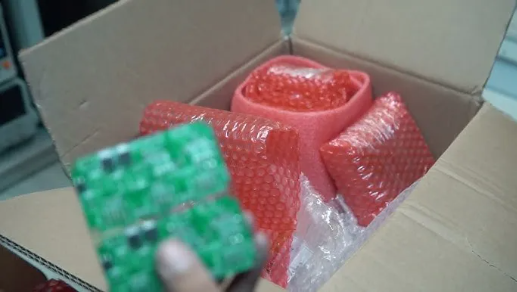High speed signal pcb guidelines
Importance Of Impedance Control In High-Speed Signal PCBs
In the realm of high-speed signal printed circuit boards (PCBs), the importance of impedance control cannot be overstated. As electronic devices become increasingly sophisticated, the demand for faster data transmission rates has surged, necessitating the development of PCBs that can handle high-speed signals with precision and reliability. Impedance control is a critical factor in ensuring that these high-speed signals are transmitted effectively, minimizing signal loss and distortion, and ultimately enhancing the performance of the electronic device.
To begin with, impedance is the measure of opposition that a circuit presents to the flow of alternating current.
In high-speed PCBs, maintaining consistent impedance is crucial because variations can lead to signal reflections, which in turn cause data errors and degrade signal integrity. This is particularly important in applications such as telecommunications, computing, and consumer electronics, where even minor signal disruptions can have significant consequences. Therefore, controlling impedance is essential to achieving the desired signal quality and ensuring the overall functionality of the device.
Moreover, the design of high-speed PCBs involves several factors that influence impedance, including the width and thickness of the traces, the dielectric constant of the materials used, and the spacing between traces.
Each of these elements must be carefully considered and precisely controlled to achieve the desired impedance levels. For instance, the trace width and thickness directly affect the inductance and capacitance of the circuit, which in turn impact the impedance. Similarly, the dielectric constant of the substrate material influences the speed at which signals propagate through the PCB, further affecting impedance levels. By meticulously managing these parameters, designers can ensure that the PCB meets the required impedance specifications.
In addition to design considerations, manufacturing processes also play a pivotal role in impedance control.
Variations in etching, lamination, and other fabrication processes can lead to deviations in trace dimensions and material properties, resulting in impedance mismatches. Therefore, it is imperative for manufacturers to adhere to stringent quality control measures and employ advanced fabrication techniques to maintain consistent impedance throughout the PCB. This includes using precision equipment for trace etching and employing rigorous testing procedures to verify impedance levels.
Furthermore, the implementation of impedance control in high-speed PCBs is not only a technical necessity but also a cost-effective strategy.
By ensuring that signals are transmitted with minimal loss and distortion, impedance control reduces the need for additional components such as repeaters and amplifiers, which can add complexity and expense to the design. Additionally, maintaining signal integrity through effective impedance control can lead to improved device performance and reliability, ultimately enhancing customer satisfaction and reducing the likelihood of costly recalls or repairs.
In conclusion, the importance of impedance control in high-speed signal PCBs is underscored by its impact on signal integrity, device performance, and overall cost-effectiveness. As the demand for faster and more reliable electronic devices continues to grow, the need for precise impedance control will only become more critical. By understanding and addressing the various factors that influence impedance, designers and manufacturers can ensure that high-speed PCBs meet the rigorous demands of modern technology, paving the way for continued innovation and advancement in the electronics industry.

Techniques For Minimizing Crosstalk In High-Speed PCB Design
In the realm of high-speed printed circuit board (PCB) design, minimizing crosstalk is a critical consideration that can significantly impact the performance and reliability of electronic systems. Crosstalk, the unwanted coupling of signals between adjacent traces, can lead to signal integrity issues, data errors, and electromagnetic interference. Therefore, understanding and implementing effective techniques to mitigate crosstalk is essential for engineers working on high-speed applications.
To begin with, one of the fundamental strategies for reducing crosstalk is to maintain adequate spacing between signal traces.
By increasing the distance between adjacent traces, the capacitive and inductive coupling that causes crosstalk can be minimized. This approach is particularly effective in high-speed designs where signal rise times are fast, and the potential for interference is high. Additionally, employing differential signaling can further reduce crosstalk. Differential pairs, which consist of two complementary signals, are less susceptible to external noise and can cancel out crosstalk due to their inherent design.
Moreover, the use of ground planes is another crucial technique in minimizing crosstalk.
Ground planes act as a reference point for signals and provide a low-impedance path for return currents. By placing a continuous ground plane adjacent to signal layers, the loop area for return currents is minimized, thereby reducing the inductive coupling between traces. Furthermore, ground planes can also serve as a shield, preventing electromagnetic fields from coupling into adjacent traces.
In addition to spacing and ground planes, careful consideration of trace routing is vital.
Routing traces orthogonally on adjacent layers can help minimize crosstalk by reducing the parallelism between traces. This technique, known as orthogonal routing, ensures that the electromagnetic fields generated by one trace do not align with those of another, thereby reducing the potential for interference. Additionally, avoiding long parallel runs and using serpentine routing for delay matching can further mitigate crosstalk.
Another effective method for minimizing crosstalk is the implementation of guard traces.
Guard traces are grounded or terminated traces placed between signal lines to act as a barrier against crosstalk. These traces can absorb and redirect the electromagnetic fields, preventing them from coupling into adjacent signal lines. However, it is important to ensure that guard traces are properly terminated to avoid creating additional sources of interference.
Furthermore, the choice of materials and stack-up configuration can also influence crosstalk levels.
High-speed PCBs often utilize low-loss dielectric materials that reduce signal attenuation and dispersion. By selecting materials with appropriate dielectric constants and loss tangents, designers can minimize the impact of crosstalk on signal integrity. Additionally, optimizing the layer stack-up to include dedicated power and ground planes can enhance signal isolation and reduce crosstalk.
In conclusion, minimizing crosstalk in high-speed PCB design requires a comprehensive approach that encompasses trace spacing, differential signaling, ground planes, trace routing, guard traces, and material selection.
By carefully considering these factors and implementing appropriate design techniques, engineers can significantly enhance the performance and reliability of high-speed electronic systems. As technology continues to advance and signal speeds increase, the importance of effective crosstalk mitigation strategies will only grow, underscoring the need for ongoing research and innovation in this critical area of PCB design.

Effective Layer Stackup Strategies For High-Speed Signal Integrity
In the realm of high-speed signal integrity, the design of a printed circuit board (PCB) is a critical factor that can significantly influence the performance and reliability of electronic systems. One of the most crucial aspects of PCB design is the layer stackup strategy, which plays a pivotal role in managing signal integrity, minimizing electromagnetic interference (EMI), and ensuring the overall functionality of high-speed circuits. As electronic devices continue to evolve, operating at increasingly higher frequencies, the importance of an effective layer stackup strategy cannot be overstated.
To begin with, a well-considered layer stackup can help control the impedance of signal traces, which is essential for maintaining signal integrity.
Impedance mismatches can lead to signal reflections, causing data errors and degraded performance. By carefully selecting the materials and thicknesses of the dielectric layers, designers can achieve the desired impedance levels, ensuring that signals propagate with minimal distortion. Moreover, the arrangement of signal and ground layers within the stackup is crucial. Placing signal layers adjacent to continuous ground planes can provide a return path for high-frequency currents, reducing the loop area and thereby minimizing EMI.
Furthermore, the number of layers in a PCB stackup is another important consideration.
While a simple two-layer board might suffice for low-frequency applications, high-speed designs often require multi-layer stackups to accommodate the complex routing and power distribution needs. A typical high-speed PCB might include dedicated layers for power and ground, along with multiple signal layers. This configuration not only facilitates efficient routing but also helps in isolating high-speed signals from power and ground noise, thereby enhancing signal integrity.
In addition to layer count, the sequence of layers in the stackup is equally significant.
For instance, placing power and ground layers in close proximity can create a low-inductance power distribution network, which is beneficial for high-speed designs. This arrangement helps in decoupling high-frequency noise and provides a stable reference plane for signal layers. Additionally, alternating signal layers with ground or power planes can further improve signal integrity by reducing crosstalk between adjacent signal traces. Crosstalk, which occurs when signals on one trace couple into another, can be detrimental to high-speed performance, leading to data corruption and increased error rates.
Moreover, the choice of materials used in the PCB stackup can have a profound impact on high-speed signal integrity.
Low-loss dielectric materials are often preferred for high-frequency applications, as they reduce signal attenuation and maintain signal quality over longer distances. The dielectric constant and loss tangent of the materials should be carefully considered to ensure that they align with the design requirements and operating frequencies of the application.
In conclusion, effective layer stackup strategies are indispensable for achieving high-speed signal integrity in modern electronic designs. By meticulously planning the arrangement and composition of layers, designers can mitigate issues such as impedance mismatches, EMI, and crosstalk, thereby ensuring optimal performance and reliability. As technology continues to advance, the demand for high-speed, high-performance electronic systems will only increase, underscoring the need for innovative and effective PCB design strategies. Through careful consideration of layer stackup, designers can meet these challenges head-on, paving the way for the next generation of electronic devices.

Best Practices For Routing High-Speed Signals On PCBs
Routing high-speed signals on printed circuit boards (PCBs) is a critical task that demands meticulous attention to detail and adherence to best practices to ensure optimal performance and reliability. As electronic devices become increasingly sophisticated, the need for efficient signal transmission at high speeds has become paramount. To achieve this, designers must consider several key factors that influence signal integrity and overall system functionality.
One of the foremost considerations in routing high-speed signals is the management of impedance.
Impedance mismatches can lead to signal reflections, which degrade signal quality and can cause data errors. To mitigate this, it is essential to maintain consistent trace widths and spacing, as well as to use controlled impedance traces. This involves calculating the appropriate trace dimensions based on the dielectric properties of the PCB material and the desired impedance value. By doing so, designers can ensure that signals propagate with minimal distortion.
In addition to impedance control, minimizing crosstalk is crucial for maintaining signal integrity.
Crosstalk occurs when signals on adjacent traces interfere with each other, leading to potential data corruption. To reduce crosstalk, it is advisable to maintain adequate spacing between high-speed traces and to use ground planes effectively. Ground planes act as a shield, absorbing electromagnetic interference and providing a return path for signals, thereby reducing the likelihood of crosstalk.
Another important aspect of routing high-speed signals is the management of signal return paths.
High-speed signals tend to follow the path of least inductance, which is typically directly beneath the signal trace on the ground plane. Ensuring that there are no interruptions in the return path, such as gaps in the ground plane, is essential to prevent signal integrity issues. Designers should strive to keep return paths as short and direct as possible, which can be achieved by placing vias strategically and avoiding unnecessary layer transitions.
Furthermore, the use of differential signaling can be advantageous in high-speed applications.
Differential pairs consist of two complementary signals that are routed together, which helps to cancel out noise and improve signal integrity. When routing differential pairs, it is important to maintain consistent spacing and length matching between the two traces to ensure that they remain balanced. This practice helps to minimize skew and ensures that the signals arrive at their destination simultaneously.
Signal integrity can also be enhanced by carefully considering the placement of components and connectors.
Placing high-speed components close to each other can reduce the length of critical signal paths, thereby minimizing potential sources of interference. Additionally, connectors should be chosen and placed with care to avoid introducing impedance discontinuities that could degrade signal quality.
Finally, it is essential to conduct thorough simulations and testing during the design process.
Simulation tools can help identify potential issues before the PCB is manufactured, allowing designers to make necessary adjustments. Once the PCB is fabricated, testing with high-speed oscilloscopes and other diagnostic equipment can verify that the design meets the required performance specifications.
In conclusion, routing high-speed signals on PCBs requires a comprehensive understanding of various factors that influence signal integrity. By adhering to best practices such as impedance control, crosstalk reduction, effective return path management, and careful component placement, designers can ensure that their high-speed designs perform reliably and efficiently. Through diligent planning, simulation, and testing, the challenges associated with high-speed signal routing can be successfully navigated, leading to robust and high-performing electronic systems.






